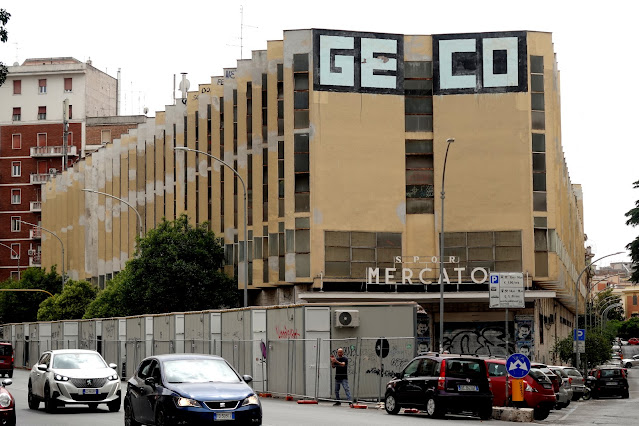Complaints about restaurants and bars that put tables on the sidewalk and into the street are nothing new in Rome. But the story is a bit different this time. In May, Rome's city government passed some new regulations, designed to restrict the amount of public space that restaurants can occupy.
The city is grappling with a substantial increase in the amount of appropriated public space that came about two years ago, when Covid-19 drove the clients of restaurants and bars into the open air. Because of the Covid emergency, the city allowed establishments to appropriate space without paying extra fees and to self-certify the additional space, rather than go through a more complex, more bureaucratic procedure that would involve hiring professionals to measure and perhaps design the exterior extensions. The new rules will require paying fees and hiring either an architect or a "geometra"--which might be translated as a project engineer--and submitting requests to the Superintendent in charge of such matters.
The new regulations are scheduled to go into effect on July 1 of this year (2022), though there's some interest in delaying the regulations so that the requirements for "furnishings" (tables, chairs, etc.) can be made uniform in the area.
 |
| Via dei Falischi, in the San Lorenzo quarter. The street closure and most of these street tables are new since 2019, before Covid |
The concern is primarily focused on the Centro Storico, the historical center of Rome, where tourists congregate and the streets are generally narrower. Somewhat less restrictive measures would be applied to other parts of the city as well, allowing those outside the Centro Storico to appropriate more public space than those in the Center. Residents in every locale are upset at the loss of parking spaces, although they also enjoy the expanded outdoor eating and drinking opportunities.
 |
| "Off License," a wine bar in the San Giovanni neighborhood. Sidewalk tables and an in-the-street area, taking up parking spaces. Good wine list, and quite hip, but crowded. |
Restaurateurs and bar owners--at least 3,000 of them--took advantage of the lack of fees and Covid self-certification process. Some added tables to the sidewalk area, others built onto city streets, sometimes constructing large platforms so that patrons didn't have to step down to enter. Often the new spaces were quite elaborate, with umbrellas or awnings, metal railings, plants, and light fixtures.
 |
| An elaborate, in-the-street Japanese restaurant on via Taranto. Lots of money went into building this addition. |
 |
| Another large, expensive, in-the-street platform |
Owners of these establishments are now concerned that the new fees and regulations will be costly and will reduce their business and their profits, already hammered by Covid and an increase in prices due to the war in Ukraine. Some proprietors, they say, have gone into debt during the Covid crunch and the new rules will make it more difficult to pay off these debts. Another argument they make is that Covid, and the de-regulation that took place two years ago, has changed the social life of the city, allowing tourists and residents to rediscover city streets, to see Rome in a new way. They also think that the July 1 date--coinciding with a substantial increase in tourism--is simply bad timing. And they argue that Covid not only remains a problem, but that the pandemic has changed dining habits, so that patrons now want to drink and dine in the open air.
The municipal government is considering delaying implementation until the end of September.
More photos below.
Bill
 |
| Young people's bar, sidewalk and street, San Lorenzo. Good--and economical--drinks and food in this area populated by many university students. |
 |
| Appropriating space, next to Porta San Pancrazio, on the Gianicolo |












